En cada paseo por la naturaleza, uno recibe mucho más de lo que anda buscando.
In every walk in nature, you get much more than what you are looking for.
John Muir
¡Hola amigos! Espero que hayan pasado un buen fin de semana, reconfortante y divertido, y que hayan logrado reponer las energías necesarias para realizar todas sus actividades cotidianas.
Y para iniciar esta semana, les traigo las imágenes de la linda Coqueta de color rojo intenso que me gusta mucho esperar su floración ya que es una pequeña flor que aporta mucha alegría a través de su precioso color y que, al comenzar a abrir sus capullos, sus pétalos se nos muestran como un pequeño molino de viento, según mi apreciación.
Hello friends! I hope you had a good weekend, comforting and fun, and that you managed to replenish the energy needed to perform all your daily activities.
And to start this week, I bring you the images of the pretty Coquette of intense red color that I like very much to wait for its bloom since it is a small flower that brings a lot of joy through its precious color and that, when it begins to open its buds, its petals appear to us as a small windmill, according to my appreciation.
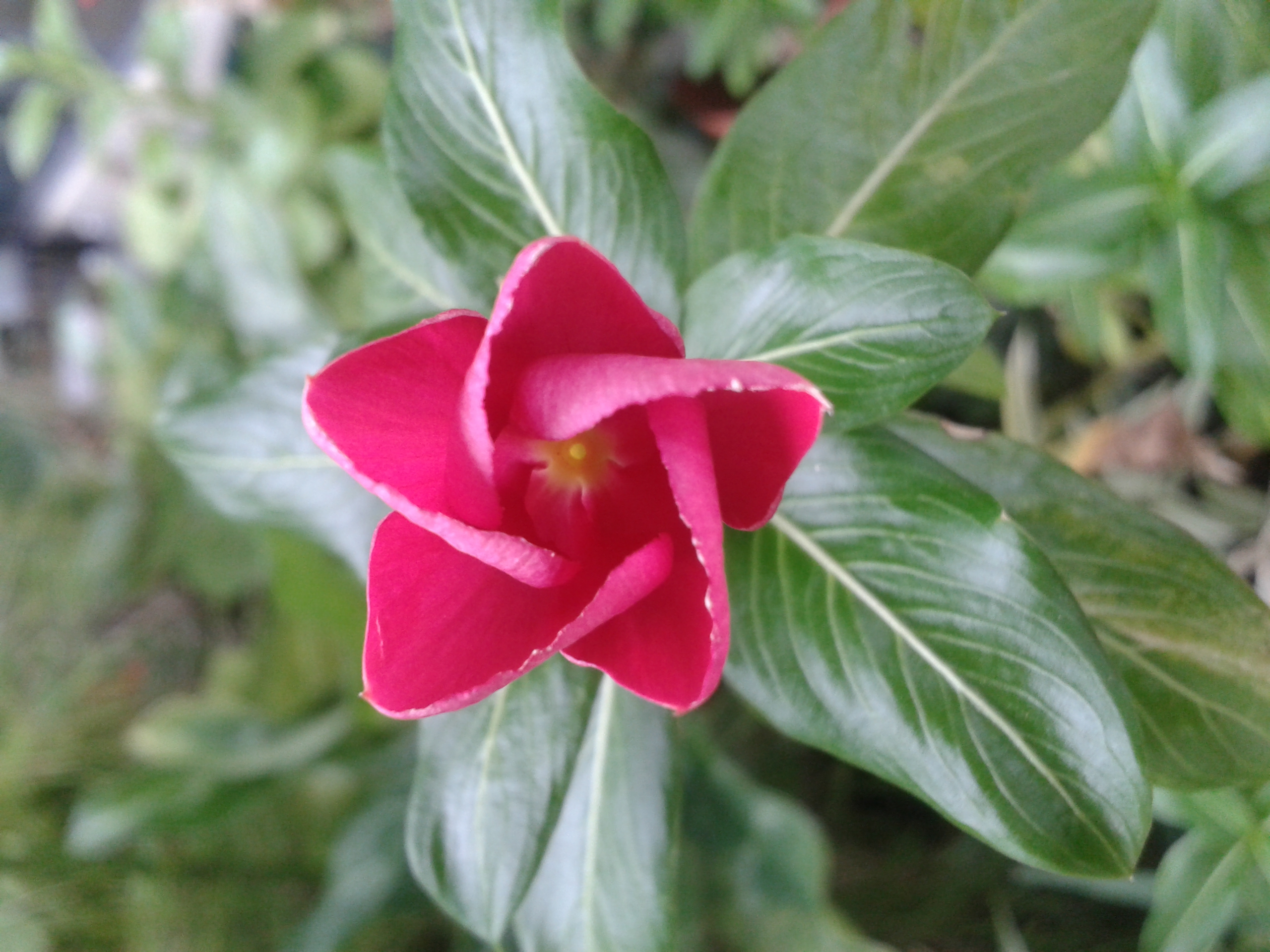
Entre sus diversos nombres comunes tenemos: Alegría de la casa, Catarantus, Chavelita,Chuladita, Coqueta, Dominica, Flor del Principe, Guajaca, Isabelita, Maravilla, Ninfa, Nomedejes, Ojos brillantes, Pervinca tropical, Teresita, Vicaria, Vincapervinca, Vicaria blanca, Vinca de Madagascar, Vinca del Cabo, Vinca rosa, Vinca rosada, Vígaro de Madagascar, Vígaro rosa o Violeta blanca.
La Coqueta o Vinca de Madagascar es nativa de Madagascar y se ha naturalizado en numerosos países tropicales y subtropicales como Asia del Sur, África del Sur, América, Sur de Europa y Australia. Ha recibido diversos nombres científicos, a saber: Vinca rosea (1759) que es el basónimo o nombre científico bajo el cual fue originalmente nombrado o catalogado, Pervinca rosea (1789), Catharanthus roseus (1837), Lochnera rosea (1838), Ammocallis rosea (1903). Tras una investigación realizada en 1966 por Stearn para determinar cuál de estos nombres era el correcto, encontrando que éste debía ser Catharanthus roseus.
El origen y significado de su nombre científico, Catharanthus roseus, tenemos que su género, Catharanthus, proviene del griego katharos y anthos que significan, respectivamente, puro y limpio y flor, para referirse al color de las flores, sin manchas. Y el epíteto específico, roseus, que significa color rosa en alusión al color de sus flores.
Among its various common names we have: House Joy, Catarantus, Chavelita,Chuladita, Coqueta, Dominica, Prince's Flower, Guajaca, Isabelita, Maravilla, Nymph, Nomedejes, Shining Eyes, Tropical Periwinkle, Teresita, Vicaria, Vincapervinca, White Vicaria, Madagascar periwinkle, Cape periwinkle, Pink periwinkle, Pink periwinkle, Madagascar periwinkle, Pink periwinkle or White violet.
The Coquette or Madagascar periwinkle is native to Madagascar and has naturalized in numerous tropical and subtropical countries such as South Asia, South Africa, Americas, Southern Europe and Australia. It has been given various scientific names, namely: Vinca rosea (1759) which is the basonym or scientific name under which it was originally named or catalogued, Pervinca rosea (1789), Catharanthus roseus (1837), Lochnera rosea (1838), Ammocallis rosea (1903). Following an investigation in 1966 by Stearn to determine which of these names was correct, he found that it should be Catharanthus roseus.
The origin and meaning of its scientific name, Catharanthus roseus, we have that its genre, Catharanthus, comes from the Greek katharos and anthos meaning, respectively, pure and clean and flower, to refer to the color of the flowers, without spots. And the specific epithet, roseus, which means pink color, alluding to the color of its flowers.
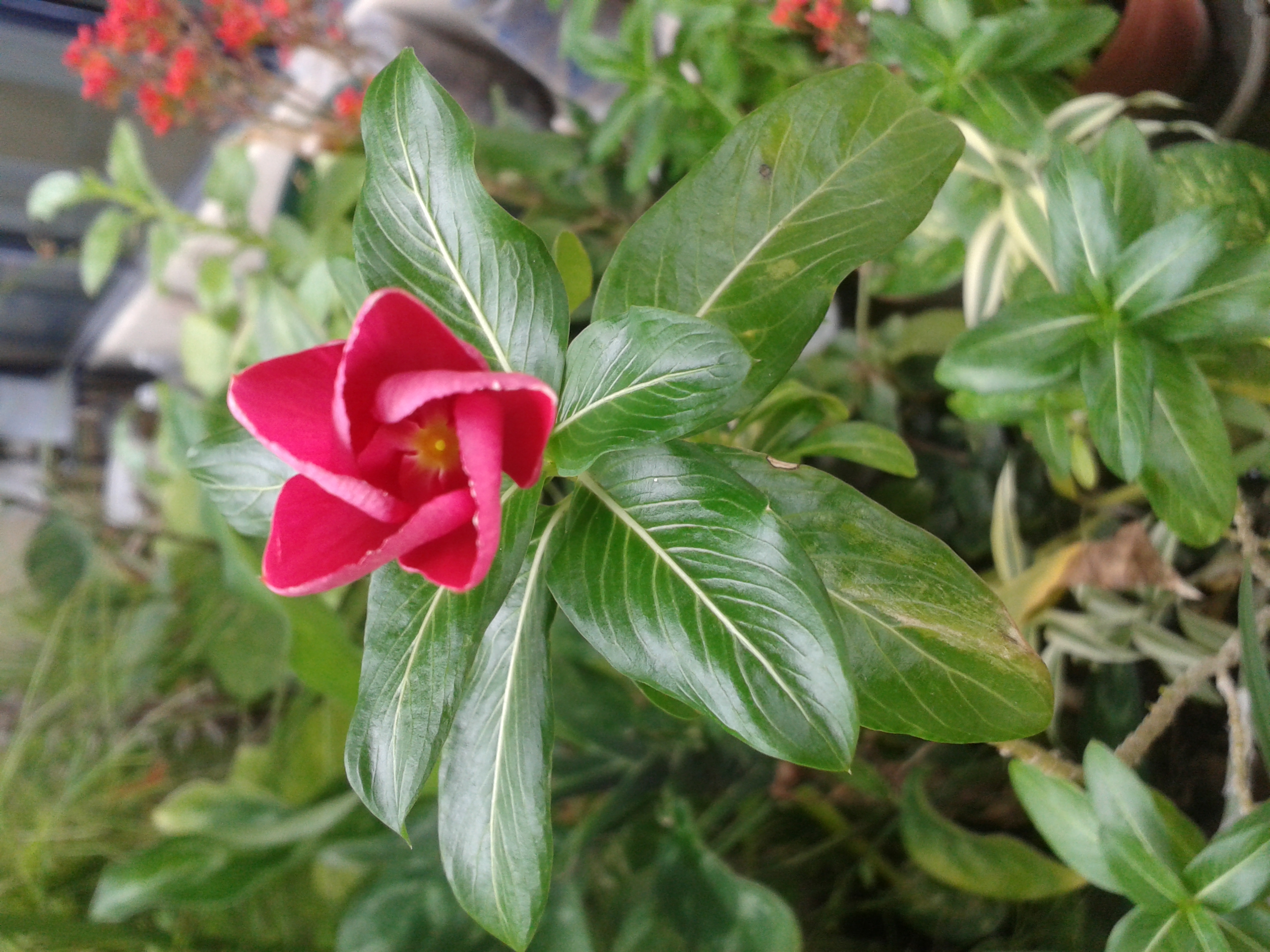
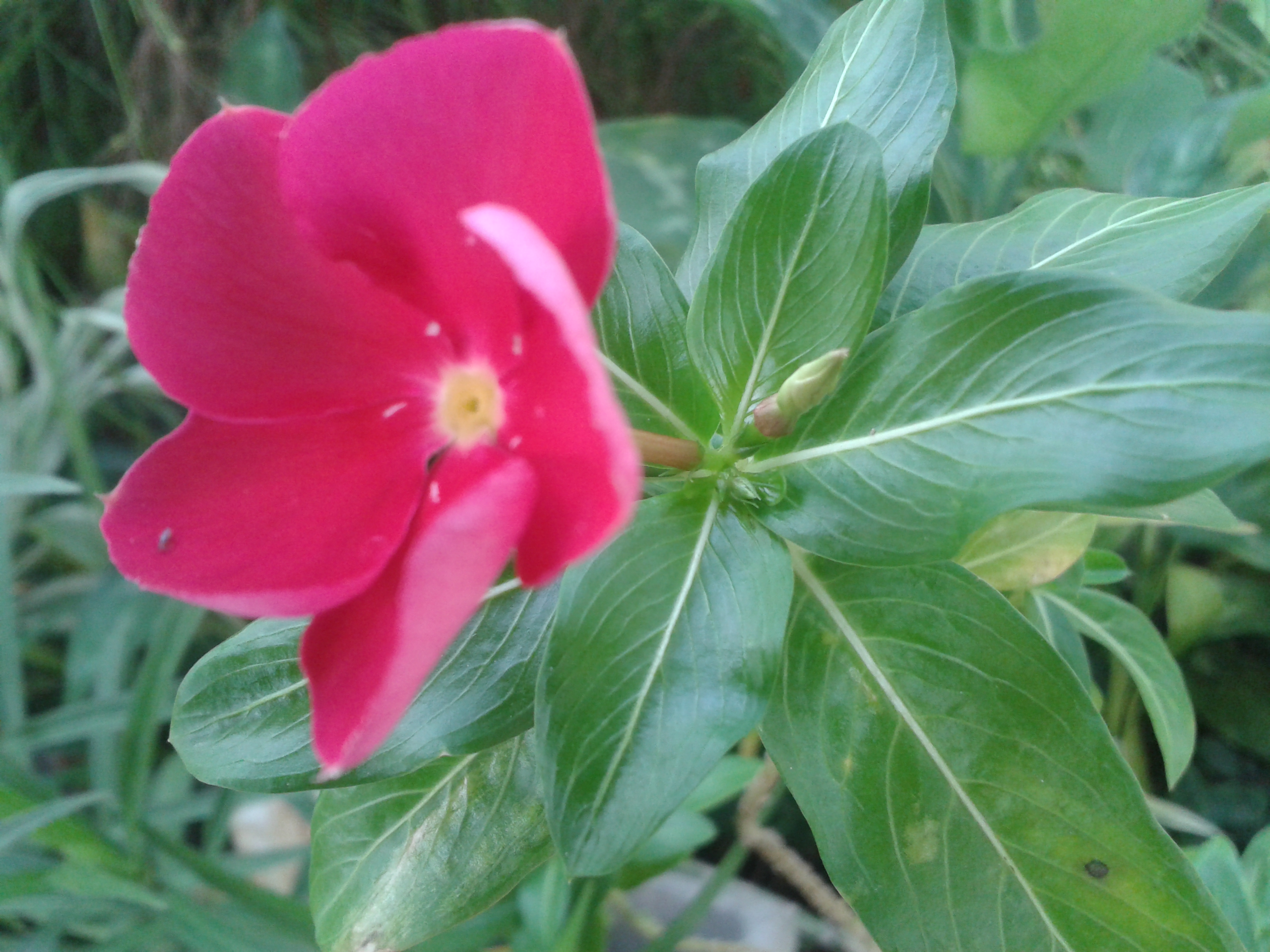
Es una planta que se ha popularizado por la belleza y el colorido de sus flores de cinco pétalos de variados colores como el blanco, rosado, rojo y púrpura oscuro que resaltan, aún más, por el contraste con el color verde oscuro de sus hojas. Su fruto es un folículo que contiene numerosas semillas de color negro que al abrir, espontáneamente, libera todo su contenido.
Es una planta muy fácil de cultivar, teniendo en consideración que tolera relativamente la sequía, por tanto, es necesario realizar su riego cada vez que su tierra se encuentre seca. Es recomendable realizar su poda para darle una bonita forma a la mata y, de paso, aprovechar las ramas cortadas como esquejes para su reproducción. También es posible multiplicarlas por medio de sus semillas.
It is a plant that has become popular for the beauty and colorfulness of its flowers with five petals of various colors such as white, pink, red and dark purple that stand out, even more, by contrast with the dark green color of its leaves. Its fruit is a follicle containing numerous black seeds that, when opened, spontaneously release all their contents.
It is a very easy plant to cultivate, taking into consideration that it is relatively drought tolerant, therefore, it is necessary to water it every time its soil is dry. It is advisable to carry out its pruning to give a nice shape to the bush and, incidentally, to take advantage of the cut branches as cuttings for its reproduction. It is also possible to multiply them by means of their seeds.
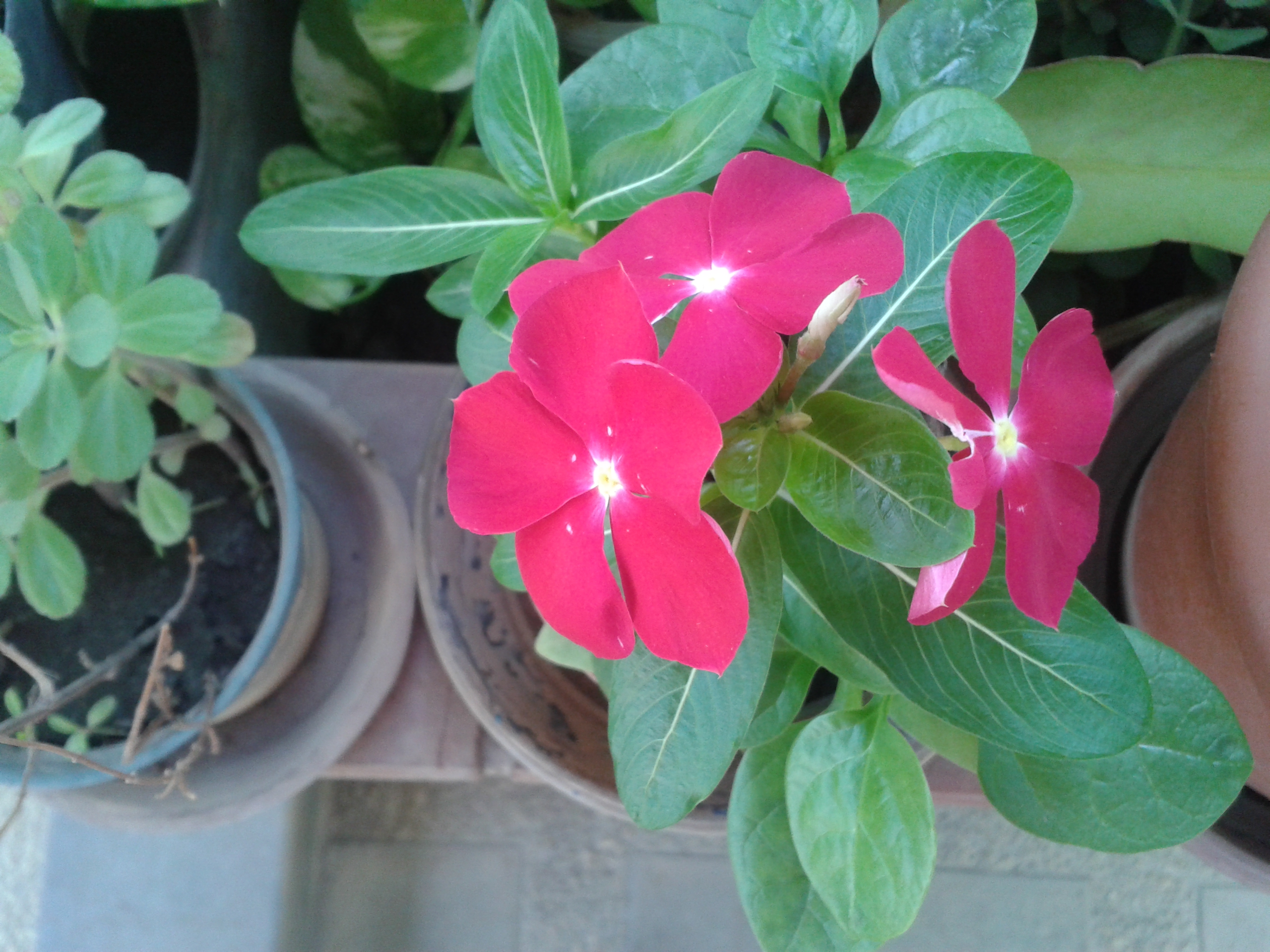

La Catharanthus roseus se cultiva ampliamente como una planta ornamental pero también se le aprecia por sus propiedades medicinales. El tallo, las hojas y las flores partes tóxicas debido a la presencia de diversos alcaloides como vincristina y visblastina, los cuales son utilizados como parte del tratamiento contra tumores malignos o cáncer. De su raíz seca, se extrae ajmalicina que se utiliza en el tratamiento de problemas psicológicos, traumatismos craneales, senilidad y problemas neurológicos.
Adicionalmente, se utiliza en la medicina popular de India, Cuba y Brasil para tratar la diabetes, afecciones oculares, tratamiento de hemorragias y cicatrización de llagas.
The Catharanthus roseus is widely cultivated as an ornamental plant but is also appreciated for its medicinal properties. The stem, leaves and flowers parts toxic due to the presence of various alkaloids such as vincristine and visblastine, which are used as part of the treatment against malignant tumors or cancer. From its dried root, ajmalicin is extracted and used in the treatment of psychological problems, head trauma, senility and neurological problems.
Additionally, it is used in the folk medicine of India, Cuba and Brazil to treat diabetes, eye conditions, treatment of hemorrhages and healing of sores.
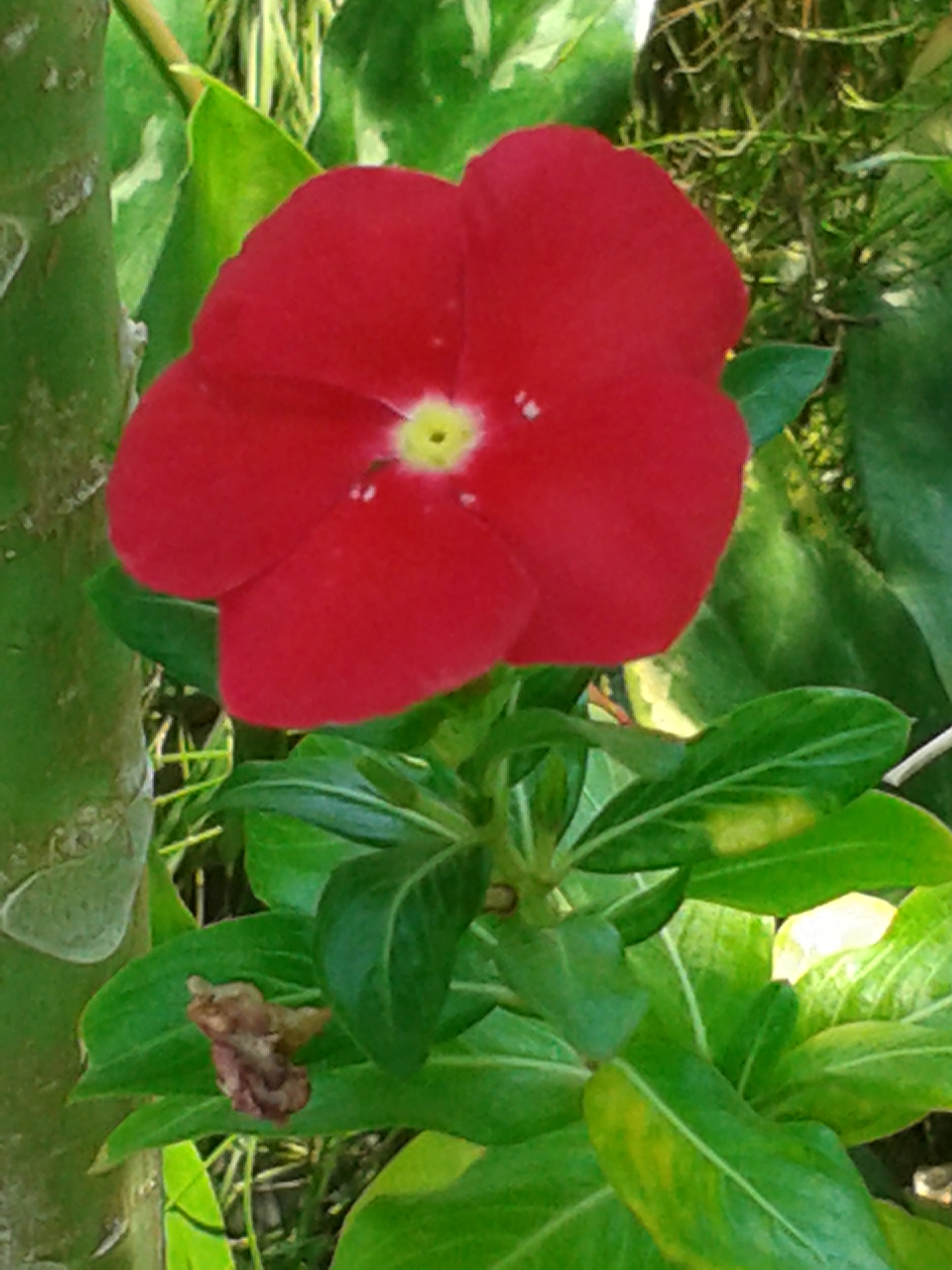
¡Gracias por tu visita! ¡Gracias por leerme!
¡Hasta pronto amigos!
Thank you for your visit! thank you for reading me!
See you soon friends!

Fuentes Consultadas - Sources Consulted
Traducción realizada utilizando DeepL - Translation using DeepL
| Dispositivo - Device: | SAMSUNG S3 Mini |
|---|---|
| Cámara - Camera: | GT-I8190 |
| Ubicación - Location: | Lechería, VENEZUELA |
We appreciate your work and your post has been manually curated by @redheadpei on behalf of Amazing Nature Community. It will be added to the weekly botany curation post. Keep up the good work!